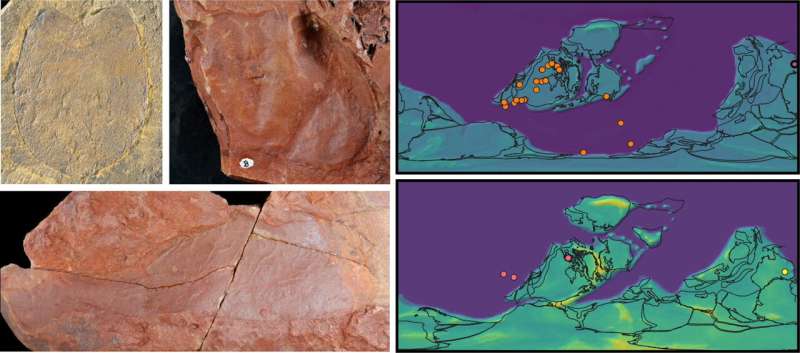August 20, 2024 report
This article has been reviewed according to Science X's editorial process and policies. Editors have highlighted the following attributes while ensuring the content's credibility:
fact-checked
peer-reviewed publication
trusted source
proofread
Paleontologists describe new examples of giant sea scorpions from the Silurian and Devonian in New South Wales

A team of paleontologists from the American Museum of Natural History, the Australian Museum Research Institute, and the WB Clarke Geoscience Center, in Australia, has added new evidential data for pterygotid eurypterids from the Silurian and Devonian in New South Wales. Their paper is published in the journal Gondwana Research.
There once existed a group of giant sea scorpions belonging to the family Pterygotidae, some as large as an adult human being, all belonging to a group of arthropods called eurypterids. They lived approximately 444 million years ago, during the Paleozoic. No evidence of them has been found since 393 million years ago, suggesting extinction due to a change in the environment.
The research team noted that little evidence has been found of pterygotids living in what is now Australia, mostly due to lack of research. To rectify that situation, they studied rock formations in New South Wales that showed evidence of the ancient creatures and found what they describe as new examples of pterygotid eurypterids, one from the Silurian (443.8 to 419.2 million years ago), the other from the Devonian (419.2 to 358.9 million years ago).
The researchers note that the fossils were mostly of exoskeletons, one of a Pterygotus, the other Jaekelopterus, which were the largest sea scorpion species. They were nearly identical to others that had been found around the supercontinent Gondwana. This find, the researchers note, suggests the creatures had the ability to cross the ocean, a journey that would have been thousands of kilometers.
The research team suggests that gigantism may have played a role in their ability to migrate such long distances, though they note the cause and effect could have been the other way around. Also, their sudden extinction remains a mystery. The researchers plan to keep looking, hoping to find out why.
More information: Russell D.C. Bicknell et al, Novel pterygotid sea scorpions from the Silurian and Devonian of Gondwana, Gondwana Research (2024). DOI: 10.1016/j.gr.2024.08.005
Journal information: Gondwana Research
© 2024 Science X Network




















